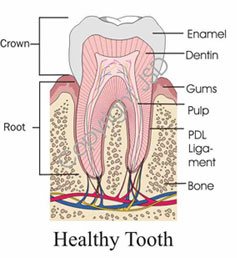Common Endodontic Questions
Below you will find answers to the questions we get asked the most about endodontic care.
Below you will find answers to the questions we get asked the most about endodontic care.
We will take every measure to ensure that your procedure is in no way uncomfortable or painful. If treatment is needed, we will inject a small amount of anesthesia to gently numb a concentrated area of your mouth. For most patients, the feeling of numbness usually subsides after 2-3 hours.
Often, restorative work will need to be completed by your general dentist on a tooth that recently was treated with root canal therapy. Usually, a temporary restoration is placed over your root canal to seal it up until this restorative work is completed. You need to return to your general dentist as soon as possible (or within 3 weeks) so that the tooth can be properly sealed and restored.
 A local anesthetic will be given. A sheet of latex called the “rubber dam” (we’ve got non-latex ones too) will be placed around the tooth to isolate it, hence keeping it clean and dry during treatment. The treatment consists of three or four basic steps, but the number of visits will depend on your particular case. Some treatments take 2 visits but many are just a single visit. Occasionally 3 appointments are needed.
A local anesthetic will be given. A sheet of latex called the “rubber dam” (we’ve got non-latex ones too) will be placed around the tooth to isolate it, hence keeping it clean and dry during treatment. The treatment consists of three or four basic steps, but the number of visits will depend on your particular case. Some treatments take 2 visits but many are just a single visit. Occasionally 3 appointments are needed.
In any case, it depends on the degree of infection/inflammation and degree of treatment difficulty. To us, it’s more important to do it the very best we can then to meet a specific time criteria. Let’s look at the basic steps for nonsurgical endodontic therapy.
There are, of course, no guarantees. Root canal or endodontic therapy has a very high degree of success, up to 90%. Teeth which can be treated near ideal have a success rate up to ninety percent! We will discuss with you the chances of success before any endodontic procedure to help you make an informed decision. If a root canal or endodontic therapy is unsuccessful or fails you still have options.
Since patients are given anesthesia, a root canal isn’t more painful than a regular dental procedure, such as a filling or getting a wisdom tooth removed. However, a root canal is generally a bit sore or numb after the procedure, and can even cause mild discomfort for a few days.
Root canals are needed when the soft center of the tooth, the pulp, degenerates. This tissue is the tooth’s immune system that fights off bacterial infection. Often, when it is not functioning properly, the first sign is pain to cold or hot. Sometimes, the tooth can create severe pain of the jaw, head and neck. However, in many cases, this tissue degenerates without pain or symptoms and the tooth becomes infected. Again, sometimes this is a painful process and sometimes it is not. When there is no pain or swelling, an X-ray of the tooth and surrounding bone can indicate that the pulp has degenerated.
There are a few symptoms that mean you might need a root canal—
Although you will most likely be numb for 2-4 hours following the procedure, most patients are able to return to school or work directly following a root canal. However, it is advised against eating until the numbness is completely gone.
The cost varies depending on how complex the problem is and which tooth is affected. Molars are more difficult to treat; the fee is usually more. Most dental insurance policies provide some coverage for endodontic treatment.
Generally, endodontic treatment and restoration of the natural tooth are less expensive than the alternative of having the tooth extracted. An extracted tooth must be replaced with an implant or bridge to restore chewing function and prevent adjacent teeth from shifting. These procedures tend to cost more than endodontic treatment and appropriate restoration.